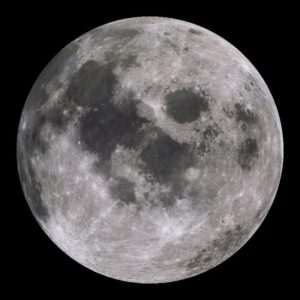Issued by the Australian Science Media Centre:
Data from three spacecraft indicate that water exists in the surface of the soil of the moon, a discovery that raises the possibility it could provide resources for future moon colonisation. Research papers outlining the discovery are being published in Science tomorrow – the embargo on the papers was lifted by Science today.
 The Moon Mineralogy Mapper (M3) on the Indian lunar satellite Chandrayaan-1, which stopped operating last month, detected water by analysing the way that light from the sun reflects off the lunar surface. Light is reflected in different wavelengths off of different minerals, and the researchers detected wavelengths of reflected light that would indicate water is present. Similar instruments were also present on Deep Impact which went past the moon in June and the NASA’s Cassini probe which passed the moon ten years ago, and both have confirmed the finding.
The Moon Mineralogy Mapper (M3) on the Indian lunar satellite Chandrayaan-1, which stopped operating last month, detected water by analysing the way that light from the sun reflects off the lunar surface. Light is reflected in different wavelengths off of different minerals, and the researchers detected wavelengths of reflected light that would indicate water is present. Similar instruments were also present on Deep Impact which went past the moon in June and the NASA’s Cassini probe which passed the moon ten years ago, and both have confirmed the finding.
Dr Marc Norman is a Senior Fellow in the Research School of Earth Sciences at the Australian National University, Canberra. He is previously worked at the lunar curatorial laboratories at the NASA Johnson Space Centre.
“This is a major discovery that will have a significant impact on international plans for exploration of the Moon. China and the US in particular will have significant interest in the distribution, size, and origin of this potential resource for human exploration.
“One caveat – it is important to realise that this is not liquid water like our oceans, nor ice like on the Mars polar caps. Rather this water on the Moon appears to be bound up with minerals such that it is stable in the airless and low-gravity environment of the Moon. So we won’t be able to pump it like groundwater, but will have to collect fairly large volumes of lunar soil, then extract and store the water for use. This discovery will provide a huge boost to plans for devising robotic exploration and processing systems that work in the extremes of temperature, gravity, and dust found on the Moon, and to research into the origin of volatiles on the Moon.”
Dr Charles (Charley) Lineweaver is Senior Fellow at the Planetary Sciences Institute at Mt. Stromlo Observatory and the Research School of Earth Sciences at The Australian National University, Canberra
“This is an exciting and interesting result because it conflicts with the received wisdom which has been:
‘We’ve been to the Moon and it is dry.’ Yes, but how dry? There is lots of oxygen in the rocks of the Moon, but there isn’t any hydrogen. Without hydrogen you can’t make water.
“Apparently, the solar wind is the source of enough hydrogen to coat the upper millimetres (but not lower) of the lunar surface with OH or H2O. There is also an interesting pattern of more OH/H2O near the poles of the Moon where it is the coldest. We also see this pattern on Mars (but there is much more water on Mars than on the Moon).
“It is possible that this surficial OH/H2O gets collected in the permanently shadowed regions of the Moon and we have good reasons to expect to find it there. On Oct 9, when the LCROSS mission crashes a part of itself into a permanently shadowed region of the Moon, we will examine the plume sent up by the crash, for water. Water, water, a little everywhere but not a drop to drink unless it has collected at the poles.
“We’ll find out in two weeks.”
Professor Roger Clay is an astrophysicist from the University of Adelaide’s School of Chemistry & Physics.
“This is very exciting because it is so unexpected. It tells us some fascinating science, which is that water can be found where it would not seem reasonable for it to be. That is, all over the Moon. The Moon’s surface can get very hot where it is in view of the Sun – it has a two week ‘day’ and it has no protective atmosphere to average out temperatures. It also now makes the Moon a much more attractive place for a space base since water is a requirement for manned bases and it is heavy to transport. It is also a potentially convenient source of fuel materials for further distant missions.
“It seems to me that the real existence of water needs further confirmation, there could be spectroscopic confusion with hydroxyl although there is some evidence that it is real water.
“The next planned step is to look for more substantial water near the poles – they are cooler. The hope is that there may be underground water.”
Professor Malcolm Walter is Professor of Astrobiology and Director of the Australian Centre for Astrobiology at the University of New South Wales
“The Solar System has sprung another surprise on us. The Moon, until now thought to be drier than a bone, turns out to be covered in water.
“A NASA instrument on an Indian orbiter has found the spectral signature of water. It probably exists as films only molecules thick on minerals in the surface sediments of the Moon, but it is widespread. How it got there is still a matter for conjecture, but it could result from interactions of protons in the solar wind with oxygen-bearing minerals on the Moon. It does not mean that there might be life on the Moon, but it might be a useful resource for future explorers.”